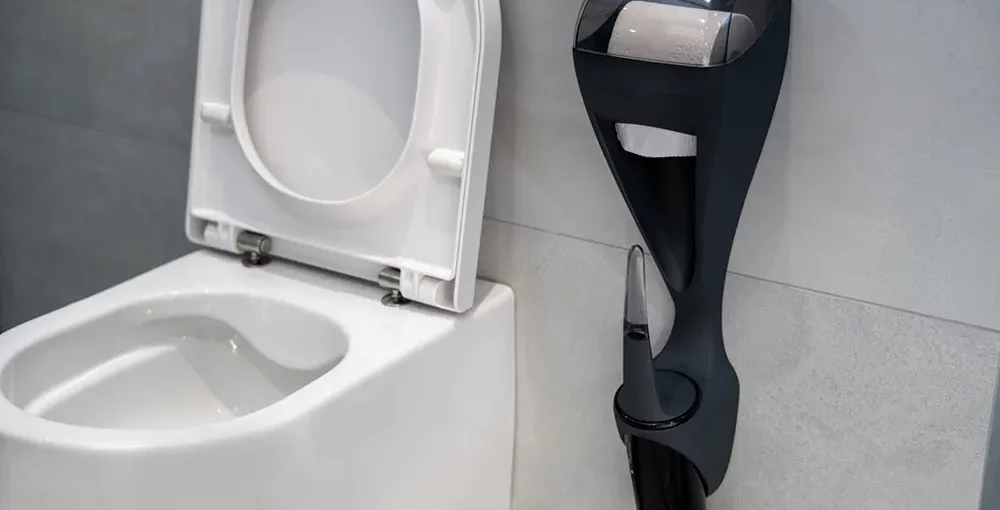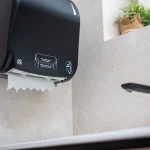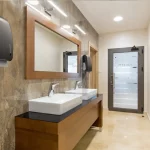Industrial and warehouse dispensers – In industry and logistics, the rule is simple: the same dispenser does not perform equally well in every zone. Many “office” models can work perfectly in warehouses or production areas, provided they are properly selected (material, capacity, closed system, dosing method) and placed in a location that matches the level of dust, humidity, contact, and people flow.
The point is not the label “industrial” or “office,” but the alignment of the equipment with real conditions.
Dispensers that look nice but are not chosen according to conditions (vibrations, dust, chemicals, gloves, high/low temperatures) cause downtime and cost. In industry, hygiene is part of workplace safety, and a reliable dispenser is a tool, not décor.
Why is it important? Continuity of production and stable hand hygiene do not happen by chance. When a dispenser is aligned with the environment, refills are regular but infrequent, consumption is predictable, and the equipment withstands moisture, dust, and chemicals without surprises. This reduces the risk of downtime and injuries, and internal standards become achievable in practice, not only on paper.
Related topics: How much does an unhygienic toilet cost? Hidden costs of poorly equipped toilet facilities
You need equipment adapted to your conditions and zones. Call LUU +381 66 811 83 82.
Harsh conditions in industry and warehouses and the role of industrial and warehouse dispensers
“Harsh conditions” are not the same for the metal industry, cold storage, bakeries, logistics hubs, or chemical production. In one hall, the biggest problem is cart impacts and machine vibrations, In another, fine wood or flour dust enters poorly sealed housings. In a third, humidity, steam, and pressure washing; elsewhere, aggressive cleaning agents corrode plastic. Add gloves, fatigue, and heavy people flow, and it becomes clear that an adequate dispenser functions as part of the production line equipment.
Related topics: Advantages of two-year contracts: Security, price, and priority delivery through long-term supply of hygiene materials
Do you have specific conditions? We choose equipment based on risks, not brochures. LUU: +381 66 811 83 82.
Key criteria for assessment and selection based on real conditions
The assessment begins with the housing material; high-strength ABS offers an excellent ratio of price and durability in dry zones. Then we look at the system’s sealing – lids that close tightly and locks that do not loosen protect paper towels and soap from dust and moisture.
Capacity and service access are crucial; large cartridges, a clear level indicator, and one-hand opening reduce staff downtime. The dosing mechanism must work with gloves – a large lever or a reliable sensor with quick response, without “try again.”
Compatibility of consumables implies “sheet-by-sheet” for towels and cartridges with higher capacity for soap or foam. Finally, surfaces must be smooth and resistant to cleaning agents, and spare parts available.
Related topics: Paper towels quietly drain your budget – Learn how to turn it to your advantage
Send us a description of your conditions (humidity, dust, chemicals, traffic). We will return a model and installation proposal. +381 66 811 83 82.
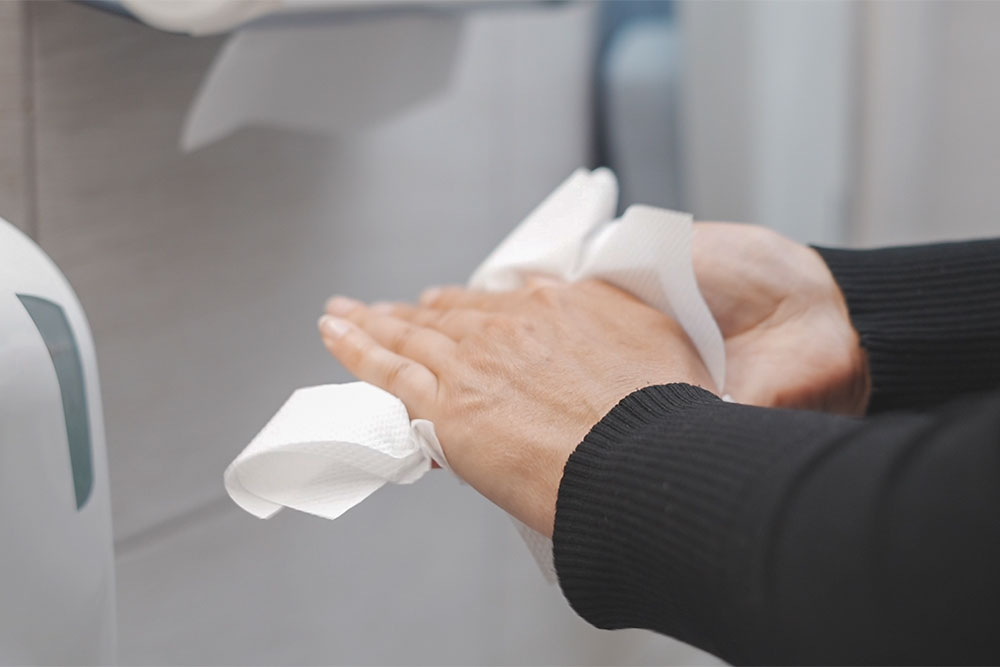
Industrial and warehouse dispensers – Types of dispensers and where each model makes the most sense
For soap and foam, we choose touchless models when hygiene is the priority and when faster flow is desired, and mechanical levers where work is done with heavy gloves. Hand disinfection requires a closed tank and a sensor with a safe, quick response, along with stands at entry and exit points.
“Sheet-by-sheet” paper towels reduce waste and keep the floor dry, while industrial rolls/cloths make sense in service zones where rougher work is done. Jumbo toilet paper dispensers with a reserve indicator reduce refill frequency. In facilities with variable workflows, it is useful to combine fixed points with mobile stations that can easily be moved when the process dictates changes.
Related topics: Why a paper towel dispenser is more than “Just a box”
Not sure what goes where? We map people flow and suggest placement. +381 66 811 83 82.
Layout and flow for industrial and warehouse dispensers with uninterrupted operation
A good layout allows the user to see the product, use it, and continue without delay. First, we define the zones: entry/exit points of the hall receive disinfection, the production line gets soap or foam, service points have industrial rolls, and toilets have jumbo dispensers.
Heights and distances are adjusted for gloves and natural hand movement, with clear signage and contrasting colors so that the dispenser is easily visible. Where traffic is heaviest, we install double dispensers or larger capacity units to avoid crowding during peak times. Even a small position adjustment can reduce user delay by several seconds per person.
Related topics: Toilet paper dispenser: Are you sure your restroom isn’t ruining the whole impression?
Request a “layout audit” (30–45 min per facility). You will receive a dispenser map with capacities. +381 66 811 83 82.
Maintenance by shifts made simple, measurable, and without improvisation
A dispenser is only as good as its refilling and cleaning routine. Introduce a short routine that takes about one minute: visually check the soap, towel, and paper levels, close and wipe the covers, check that the sensor responds on the first try or that the lever is clean and easy to press, dry the surfaces and the floor, empty and close the bin, record the time and initials in the log. During periods of increased traffic, add one more “pre-peak” check at the end of the shift – it prevents empty dispensers and complaints.
Related topics: Soap dispenser: Every drop leaves an impressiom
We send a sample of the log list template — contact LUU: +381 66 811 83 82.
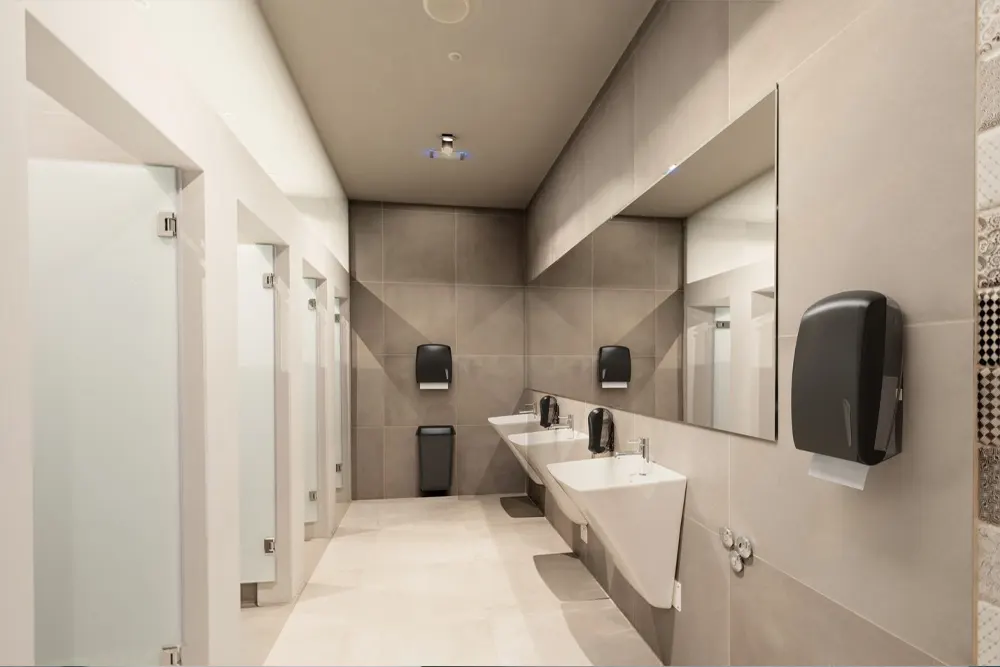
Safety and compliance at work and the role of industrial and warehouse dispensers in hygiene
Hand hygiene and dry surfaces directly affect safety — less slipping, less contamination, fewer injuries. Closed cartridges prevent “refilling from the top” and content contamination, clear pictograms shorten explanations for new workers, and a visible service calendar and refill log provide traceability for internal and external audits. A short training for refilling and cleaning (5–10 minutes) is a small investment that makes the system truly work every day.
Related topics: Paper packaging price – how to know if you’re paying too much (or too little)?
Let’s introduce a routine without improvisation: refill standards, checklists per shift, and model selection per zone. Contact: +381 66 811 83 82.
Costs and savings with industrial dispensers and where industrial and warehouse dispensers return the investment
The “cheapest” dispenser often ends up being the most expensive: it bends, jams, wastes towels, and requires frequent refills. The key is not the “industrial” label, but proper selection according to conditions. A properly chosen model with adequate capacity, closed system, reliable dispensing (sensor or mechanical), and easy service access pays off through lower consumption per use, less frequent refills, fewer downtimes, and faster maintenance. Plan per shift and per user, not per piece price — that’s when real savings and lower risks in occupational safety and environmental protection become visible.
Related topics: Dispensers in commercial buildings – a detail that changes the impression (and the cost)
Request a consumption framework and savings simulation for your facility. +381 66 811 83 82.
Industrial and warehouse dispensers – When to choose sensor and when mechanical
Sensor dispensers excel in hygiene and flow but require timely battery replacement and protection from splashing — they are ideal for cleaner zones and entrances.
Mechanical lever systems are the winners where work is done with gloves and where there are impacts and vibrations — they work without batteries and withstand rough handling.
The best practice is a combination by zone: sensors at entry points and in administration, mechanics along the production lines and service areas.
Related topics: It’s time for a new generation: Dispensers that speak on behalf of your space
No guessing: send us your layout and workflow, and you’ll receive the exact dispenser mix per zone. +381 66 811 83 82
Lock, standard key, and anti-theft system
In production and warehouse environments, the key is operational. A single universal service key for the entire series simplifies maintenance across multiple locations; locking the cartridge prevents “borrowing” of consumables, while visible level indicators reduce unnecessary openings.
Related topics: Tissue paper products: Discover How to Turn Them Into a Competitive Advantage
Need a “one key – all dispensers” setup? We’ll suggest a compatible series. +381 66 811 83 82.
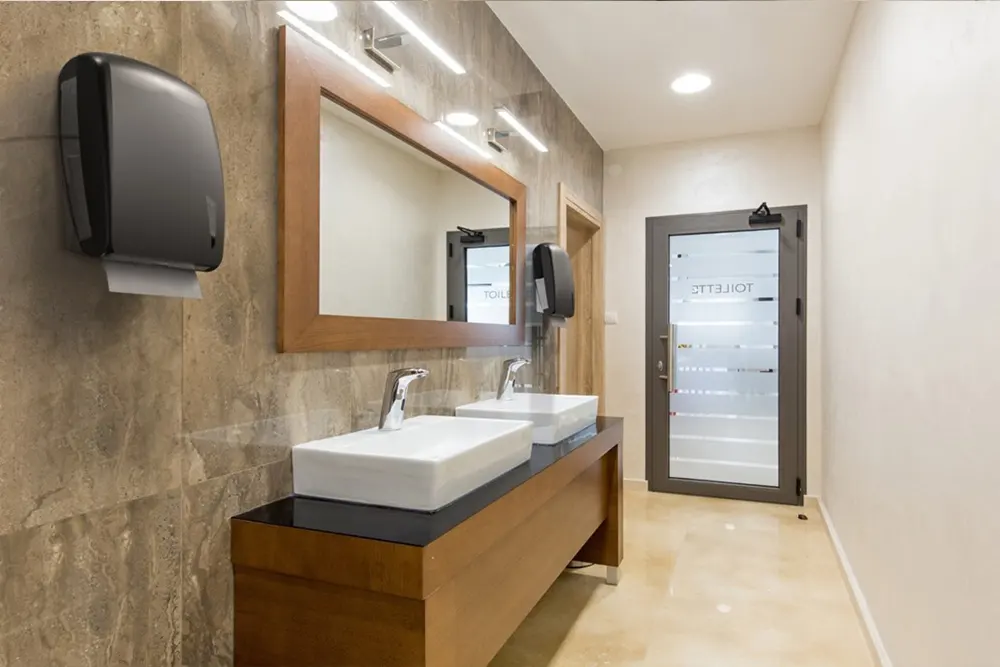
Implementation of standards for industrial and warehouse dispensers in three steps
It starts with a quick audit and mapping of zones: entrance, line, service, toilets. Based on photos and condition descriptions, we define models, capacities, and dispensing methods for each point, together with the refilling and maintenance protocol. Then follows a short briefing for the team (10 minutes) and a pilot during one shift or on one line. After adjustments, the solution is implemented in the rest of the facility without interrupting the process.
Related topics: Liquid soap dispenser elevate the standards of your space, drop by drop
Let’s check the site without any process interruption. +381 66 811 83 82
Standard, not improvisation. In an environment with dust, moisture, gloves, and constant people flow, only solutions designed for such conditions work — industrial and warehouse dispensers must be closed, durable, high-capacity, easy to refill, and compatible with chemicals and the cleaning regime. Everything else creates downtime and cost — more refills, more waste, more complaints.
The rule is simple: if the model doesn’t work at first try, replace it; if it requires frequent refills, increase capacity; if it doesn’t tolerate gloves, switch to a mechanical or reliable sensor model; if it gets dirty or leaks, choose a closed system with better sealing.
The goal is a stable flow without “bottlenecks,” dry surfaces without slipping, and consumption that can be predicted per shift and per user.
Introduce it as a procedure, not a recommendation — a short zone audit, clear model selection based on conditions, refill log, and checkpoints before peak hours. This way, hygiene becomes part of workplace safety and operational efficiency, not an occasional concern.
Call LUU: +381 66 811 83 82. We provide an exact proposal per zone and condition so that industrial and warehouse dispensers work as part of the system every day, without exception.
One email per month, zero downtime.
Subscribe to the LUU newsletter — practical tips, zone maps, and applicable ideas for halls and warehouses without empty talk.

